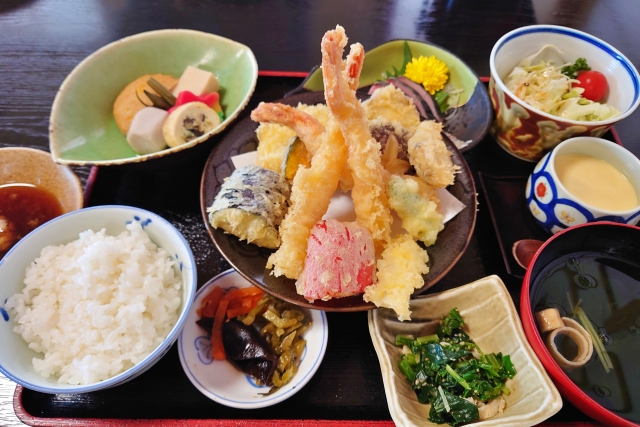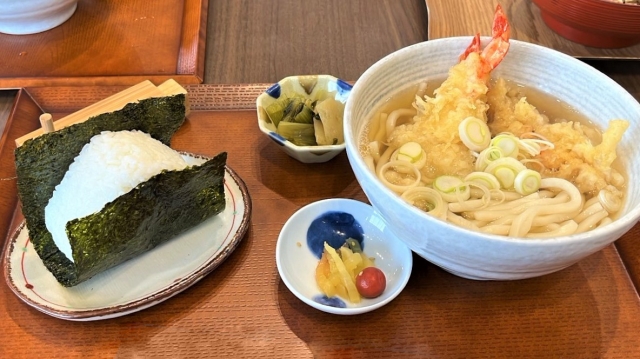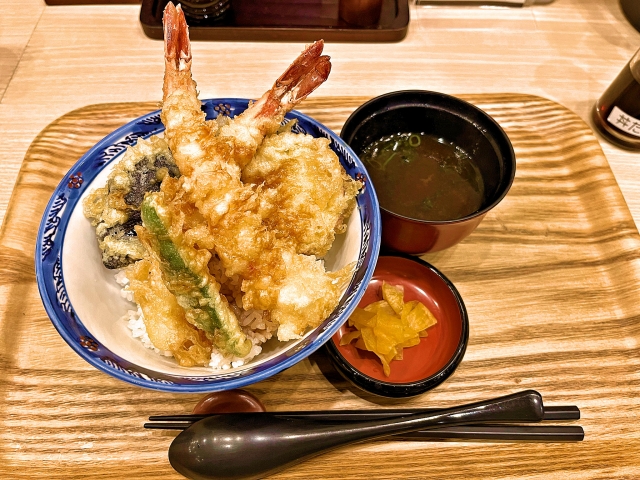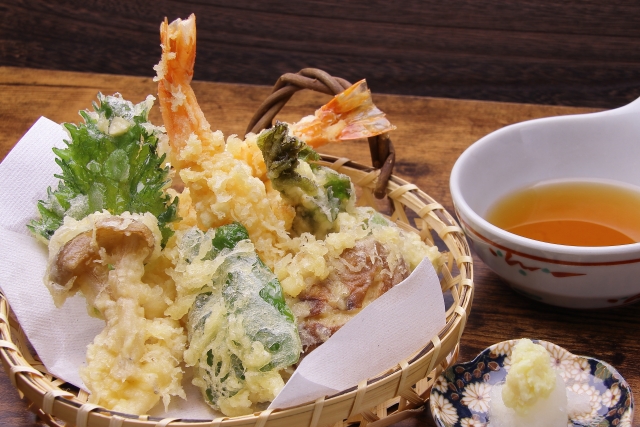One dish that visitors simply can’t miss out on is Tempura – a classic example of Japan’s obsession with detail, precision, and deep, delicious flavors.
Let’s embark on a tantalizing journey of tasting and understanding Tempura!
What is Tempura?
Tempura is a culinary tradition born in Japan, featuring a selection of seafood and vegetables that have been lightly battered and deep-fried.
It’s known for its delicate, crispy texture and the subtle flavors of its ingredients. This delightful dish, with its golden, crispy exteriors and succulent interiors, offers a taste sensation that is uniquely Japanese.
History of Tempura
Tempura, surprisingly, did not originate in Japan but was introduced to the Japanese by the Portuguese in the 16th century.
Over the years, tempura has evolved to incorporate elements of Japanese culinary aesthetics and techniques to become a dish that is quintessentially Japanese.
Tempura Menu Items

Tempura comes in a variety of forms, with each ingredient bringing its unique flavor and texture.
Here’s a list of common tempura items you’ll find in a traditional Tempura menu:
| English Name | Japanese Name | Pronunciation |
|---|---|---|
| Prawn | Ebi | Eh-bee |
| Eggplant | Nasu | Nah-soo |
| Pumpkin | Kabocha | Kah-boh-chah |
| Mushrooms | Shiitake | Shee-tah-keh |
| Horse Mackerel | Aji | Ah-jee |
| Whiting | Kisu | Kee-soo |
| Conger Eel | Anago | Ah-nah-go |
Menu with Tempura on Top
Tempura also stars in other popular Japanese dishes, where it is served atop a bed of rice or noodles.
Here’s a list of common Japanese dishes that feature tempura:
| English Name | Japanese Name | Pronunciation |
|---|---|---|
| Tempura Rice Bowl | Tendon | Ten-dohn |
| Tempura Udon | Tempura Udon | Tem-poo-rah Oo-dohn |
| Tempura Soba | Tempura Soba | Tem-poo-rah Soh-bah |
How to Enjoy Tempura

Enjoying tempura is an experience in itself. Here are a few tips:
Dip, Don’t Soak: Tempura is typically served with tentsuyu, a soy-based dipping sauce. Lightly dip your tempura piece into the sauce – just enough to flavor it, not enough to make it soggy.
Enjoy It Hot: Tempura is best enjoyed hot, as soon as it comes out of the kitchen. This ensures that the batter is at its crispiest and the ingredients at their juiciest.
Pair It With Sake or Tea: A glass of sake or a cup of green tea can be a great accompaniment to tempura, as they complement the dish’s flavors well.
Tempura Etiquette
When enjoying tempura at a restaurant, especially at a high-end one, there are a few etiquette points to keep in mind:
- Use your chopsticks to eat tempura, never your hands.
- If you are given a choice between salt and dipping sauce for your tempura, it’s best to follow the chef’s recommendation.
- It’s common to start with the lightest ingredient and work your way up to the richer ones, like prawns or fish.
By savoring the delicate flavors and appreciating the craftsmanship that goes into each piece, you can truly immerse yourself in the art and pleasure of tempura.
Whether you’re a first-time visitor or a long-time Japan enthusiast, make sure to taste this iconic dish for a memorable culinary experience.
Different Styles
Tempura is prepared differently across Japan with slight variations in the batter and ingredients used, as well as the way it is served.
Here are some regional styles that are worth trying:
| Region | Style | Description |
|---|---|---|
| Tokyo | Edo-Style Tempura | Light, crispy batter. Seafood and vegetables are often served separately. |
| Osaka | Kansai-Style Tempura | Heavier batter and often includes a wider range of vegetables. |
| Nagoya | Nagoya-Style Tempura | Known as hitsumabushi, the tempura here is served on a bed of rice and can be enjoyed three ways – eating it as is, adding condiments, or adding a flavorful soup. |
Where to Try Tempura
Tempura can be found in many restaurants across Japan, from high-end specialty restaurants to affordable tempura-donburi (tempura rice bowl) shops and even convenience stores.
However, for the best experience, it is recommended to visit a specialized tempura restaurant, where chefs have mastered the art of tempura.
Conclusion

So, when you’re in Japan, ensure that you enjoy this gastronomic delight in all its forms.
It’s not just about tasting food; it’s about immersing yourself in a cultural experience that tantalizes your palate and enriches your understanding of Japanese cuisine and culture.



comment